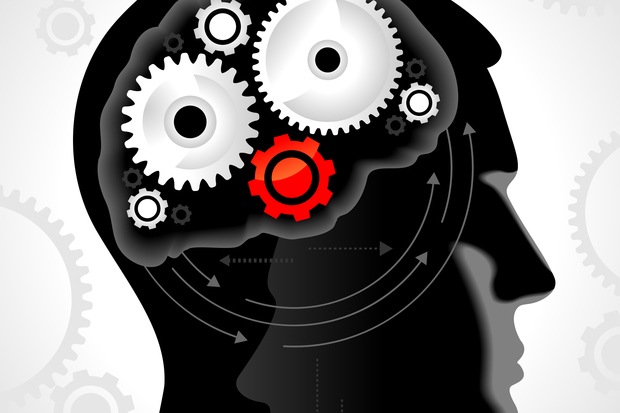The future doesn’t care how you became an expert. The experts of tomorrow will learn differently.
Whether you’ve completed your undergraduate 15-years ago or are comfortable with a newly minted Ph.D., how you will learn is changing. The experts of tomorrow will learn differently.
Massachusetts Institute of Technology, Stanford University, Harvard University, and the University of Washington are the world’s most innovative universities according to Times Higher Education. Reuters agrees, they all fall into the Reuters Top 100 World’s Most Innovative Universities. But there’s a secret. Technology is changing how all students learn and how every school inspires and grows students. Whether a student is just starting the undergrad journey or a Ph.D. going back for some refresher classes, thinking creatively and driving disruptive ideas is at the heart of many university programs.
Let’s explore how experts are created and technological impact to learning.
OpenCourseWare
MIT OpenCourseWare (MIT OCW) is an initiative of the Massachusetts Institute of Technology (MIT) to put all of the educational materials from its undergraduate- and graduate-level courses online, freely and openly available to anyone, anywhere.
edX hosts MITx. MITx courses (more commonly MIT MOOCs) embody the inventiveness, openness, rigor and quality that are hallmarks of MIT, and many use materials developed for MIT residential courses in the Institute’s five schools and 33 academic disciplines.
Open courses are a trend across academic institutions that is rapidly growing. What will become the differentiator when courses are free to access? Universities need to innovate.
Nanodegrees
The on-demand economy is affecting education with collaboration based approaches, to learning through communities. The Khan Academy offers the ability to learn anything. For free. Gibbon, allows people to share knowledge by creating playlists with the best stuff from the web, and they recently joined degreed. Degreed’s vision is that the future doesn’t care how you became and expert. Skillshare, allows students to learn a new skill each day and learn creative skills in just 15 minutes with bite-sized lessons. And Udacity already has nanodegree programs in data science, machine learning, and Android, iOS.
Many nanodegree programs incorporate the idea of digital badges. Specialization becomes more important after a general framework of the broader subject has been established.
Digital badges
Specialization brings us to digital badges. A digital badge is a validated indicator of accomplishment, skill, quality, or interest that can be earned in many learning environments. Open digital badging makes it easy for anyone to issue, earn, and display badges across the web, through an infrastructure that uses shared and open technical standards. Community-based learning might not be profitable for everyone. Do digital badges threaten the higher-education monopoly on credentials?
The on-demand economy is uniting communities – communities that learn together. The Humanities, Arts, Science, and Technology Alliance and Collaboratory (HASTAC) is an alliance of more than 14,000 humanists, artists, social scientists, scientists, and technologists working together to transform the future of learning. They concentrate on three areas: scholarship programs, learning competitions, and publication projects. This global community shares ideas.
OpenBadges enables students to get recognition for skills they have learned anywhere. Open Badges allows students to verify skills, interests and achievements through credible organizations. And because the system is based on an open standard, students can combine multiple badges from different issuers to tell the complete story of your achievements – both online and off.
Technology is changing not only how we learn, but how we process knowledge and the methods used to develop tomorrow’s innovators.
Creating experts
What is your profession today? Within what field do you consider yourself an expert?
Think for a minute about your personal path to becoming an expert. It could have been through traditional undergraduate and possibly graduate studies, augmented with work experience. That would work.
However, knowledge could have come from mentoring or non-traditional avenues such as a co-op experience (diversifying experience with school), Thiel Fellowship (Peter Thiel, co-founder of PayPal created a two-year program to build now, what a traditional education won’t teach), taking a gap year (a year off, to accelerate learning similar the specialization of a nanodegree), you may have enrolled in Massive Open Online Courses (MOOC), or one of the many alternatives. Those approaches also work.
Navigating knowledge
Imagine you’re in the office and are responsible for establishing your company’s new strategic direction. A rampant business model threats to disrupt your organization. This new business model shift has the potential to weave through the organization’s entire operational model and hooks into sophisticated technology ecosystems spanning dozens of geographic locations. The CEO introduces you to an expert in platform dynamics. This new leader is your peer to tackle this blue-chip, mega-program. This recent addition to the leadership team understands two-sided markets, multi-sided markets, and has studied extensively their effect on global competition taking a macroeconomic view. After working with this person for three months, you’re impressed with their vision and knowledge of how to apply innovation to dynamic business models.
Ask yourself a question: Do you care how they became an expert? Most executives don’t care, and like myself will rate leaders on the merits of their knowledge not where they acquired it. Universities and higher-education institutions need to ideate on their role in the collaborative economy and how students become experts.
The experts of tomorrow will learn differently.











